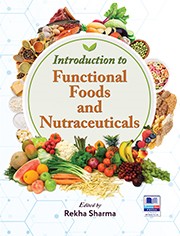

Most ebook files are in PDF format, so you can easily read them using various software such as Foxit Reader or directly on the Google Chrome browser.
Some ebook files are released by publishers in other formats such as .awz, .mobi, .epub, .fb2, etc. You may need to install specific software to read these formats on mobile/PC, such as Calibre.
Please read the tutorial at this link: https://ebookbell.com/faq
We offer FREE conversion to the popular formats you request; however, this may take some time. Therefore, right after payment, please email us, and we will try to provide the service as quickly as possible.
For some exceptional file formats or broken links (if any), please refrain from opening any disputes. Instead, email us first, and we will try to assist within a maximum of 6 hours.
EbookBell Team

4.7
56 reviewsThese five major units have been presented in forty chapters describing chemistry, sources, metabolism and bioavailability, the effect of processing, physiological effects, effects on human health and potential applications in risk reduction of diseases of various bioactive compounds. This book covers the 'Functional Foods and Nutraceuticals syllabus, taught in various Indian universities.
I hope this book will be handy for Clinical Nutrition, Biotechnology, Food Technology, Food Engineering, Nutrition and Dietetics students.
Contents
Unit – I: Introduction to Functional Foods and Nutraceuticals
1.1 History and Definition of Functional Foods and Nutraceuticals
1.2 Classification of Functional Foods and Nutraceuticals
1.3 Perceived Effects of Diet on Disease Prevention
Unit – II: Probiotics
2.1 Introduction to Probiotics, Prebiotics and Synbiotics
2.2 Taxonomy and Important Features of Probiotic Microorganisms
2.3 Health Benefits of Probiotics
2.4 Probiotics in various Foods: Fermented Milk Products, Non-milk Products etc.
2.5 Quality Assurance of Probiotics and Safety
Unit – III: Prebiotics
3.1 Oligosaccharides
3.2 Dietary Fiber
3.3 Resistant Starch
3.4 Gums
Unit – IV: Other Food Components with Potential Health Benefits
4.1 Polyphenols
4.2 Tannins and Catechins
4.3 Phytoestrogens
4.4 Phytosterols
4.5 Glucosinolates
4.6 Carotenoids and Anthocyanins
4.7 Lycopene
4.8 Curcumin
4.9 Organosulfur Compounds
4.10 An Introduction to Antinutritional Factors in Plant Foods
4.10A Phytate
4.10B An Introduction to Enzymes
4.10C Protease Inhibitors
4.10D Amylase Inhibitor
4.10E Saponins
…